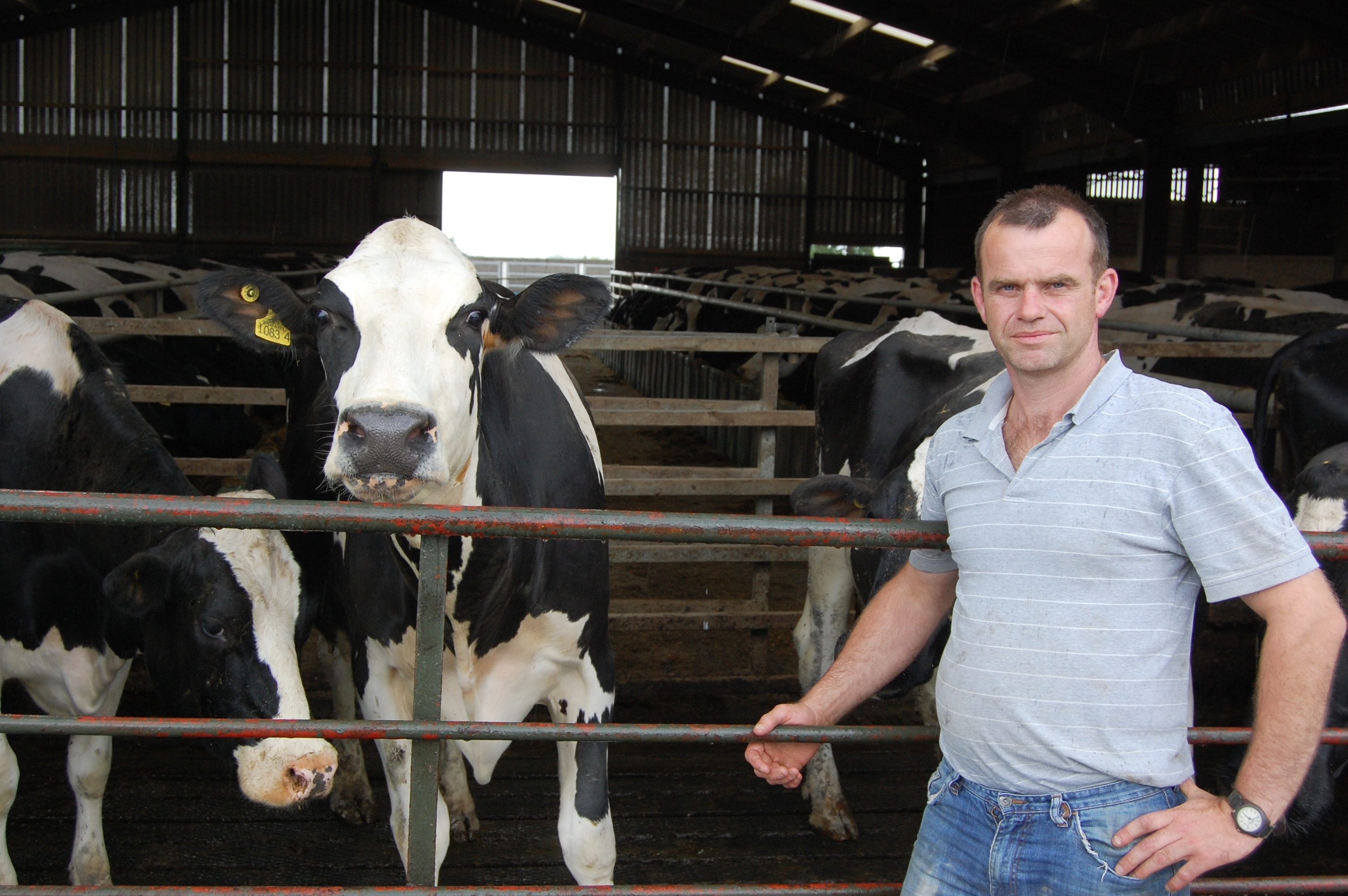Co Armagh dairy farmer Dean Wright is confirming a tremendous start to the 2015 silage season.
“We took a first cut during Balmoral Show week with the second following at the beginning of July,” he said.
“And we are delighted with the results achieved to date. The analysis of the first cut confirmed a dry matter 27%, an ME value of 11.5 a 70D value and an intake value of 99, plus good yields were achieved.
“The grass was wilted in the field for 24 hours.”
Dean points out that these analysis results were obtained prior to the second cut being taken.
“We feed a mix of first and second cut silages to the cows. We can tweak the management of the second cut, armed with the analysis figures from the previous crop. Our aim is to offer the cows optimal quality forages the year round.
“I do not know the actual analysis figures for this year’s second cut. But given the extended wilt period for the grass, I would estimate the dry matter value for the crop will come in at around around 40%.
“We also have 60 acres of whole crop to come. The wheat is looking tremendously well at the present time.”
Dean also confirmed that Provita’s Advance+ inoculant was used on both of this year’s silage crops.
“It provides us with the re-assurance that we will end up with the high quality forage that we need for the cows, which will remain stable at feed out” he said.
Provita’s Tommy Armstrong confirmed that a significant number of farmers will be making second cut silage over the coming days.
“The weather became extremely changeable during the middle part of May. And this certainly had an impact on first cut quality. Another issue that came to a degree of prominence was the level of free Nitrogen in a number of ensiled swards.
“The rule of thumb is that grass should not be cut until at least six weeks after Nitrogen fertilizer has been applied. And if there is any doubt at all about this matter, then a grass sample should be taken and submitted for analysis.”
He added:
Armstrong also pointed out that tedding will increase the risk of soil contamination, particularly in a wet season
“Wilting offers advantages when used to raise dry matter values. However, over wilting can lead to considerable losses in the field and at feed out if not managed correctly.”
“Regular rolling is crucially important. Tractors will only compact the top layer of silage so rolling needs to be done well as grass goes in, if the contractor is very busy farmers should get a second tractor to roll the clamp,” the Provita representative stressed.
“The silo should be sealed quickly and effectively.
Armstrong concluded:
“Silage quality is one of the most important drivers of feed efficiency. Ultimately the weather will have the final say on silage quality, however getting management right using a proven effective silage inoculant designed for Northern Irelands conditions such as Provita Advance+, to accelerate fermentation and improve stability at feed-out will also help.”
